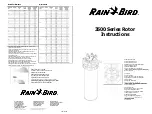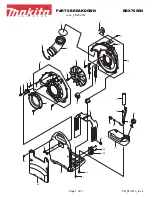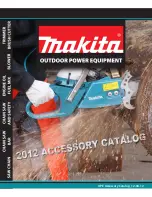
54
Section 6: Native Seed Rate Adjustment
NTS2607, NTS2609, & NTS2611 No-Till Seeder 329-141M
9/10/20
Drive Sprocket Location & Storage Placement
Figure 6-1
Native Seed Rate Adjustments
The setting should be
INCREASED
for lighter than
average seed and
DECREASED
for heavier than
average seed.
Refer to BFigure 6-1 and Native Seed Rate Chart on
page 55:
1. To adjust seed rate, first find the desired pounds/acre
or kilograms per hectare using the
on page 55. Determine which drive
sprocket (#1, #2, #3, #4, or #5) and gearbox drive
number setting (#5) are required. If needed, change
drive sprocket (#4) and drive number setting (#5):
a. Loosen chain idler nut (#8) and remove drive
chain (#9) from drive sprocket (#4).
b. Remove linchpin (#10) and drive sprocket (#4). If
a linchpin is not provided, loosen two set screws
on drive sprocket (#4) and remove drive sprocket.
c. Replace drive sprocket (#4) with the selected
drive sprocket (#1, #2, or #3).
d. Secure drive sprocket (#4) with linchpin (#10). If
linchpin is not provided, tighten the two set screws
on the drive sprocket.
e. Reinstall drive chain (#9) and adjust chain take-up
“Native Grass Seed Gearbox Drive
on page 59 for detailed instructions.
f. Set gearbox drive lever (#7) to the selected drive
number (#5) by pulling up on lock pin (#6) and
adjusting lever to the correct number.
g. Release lock pin (#6). Make sure lock pin is fully
down and lever (#7) is locked from movement.
h. Place removed sprocket (#4) on the sprocket
storage holder (#12). Secure all four unused
sprockets on the holder with linchpin (#12).
2.
Refer to
Engage native
seeds with lock in/out pin (#2). If applicable,
disengage small seeds with lock in/out pin (#5) and
set grass seeds transmission shown in Figure 2-12
on page 32 to neutral.
73624
Section 6: Native Seed Rate Adjustment
“Calibrate Native Seed Dispersal”
Calibrate Native Seed Dispersal
1. Attach seed rate crank to the all seeds drive sprocket.
“Seed Rate Crank Instructions”
on page 39.
2. Partition off three of the seed discharge openings
located inside the native seedbox.
3. Pour seed over the three discharge openings.
Do not
allow any seed to reach any of the other openings.
4. Crank rear roller assembly to verify that the drive
system is working properly and that the discharge
openings are free from foreign matter.
5. Place a container under the three discharge
openings to gather all the seeds as they are metered.
6. Crank rear roller assembly the number of rotations
noted in the table above. Check the three discharge
openings to make sure each opening has plenty of
seed coming into it.
7.
Weigh the seed which has been metered out and
divide that weight by three to get the number of
pounds or kilograms per discharge opening.
8. Next, multiply number of pounds or kilograms per
seed opening by the number of seed openings in the
native seedbox to arrive at weight “A”.
9. If weight “A” is calculated based on:
1/10 acre, then “A” x 10 = lbs/acre
1000 sq ft, then “A” x 43.56 = lbs/acre
1/20 hectare, then “A” x 20 = kgs/hectare
100 sq meters, then “A” x 100 = kgs/hectare
10. If calculated seed rate is different than the suggested
settings in the chart, then change gearbox drive
number and/or drive sprocket accordingly.
11. Repeat calibration procedure if the gearbox drive
number or drive sprocket was changed in step 10
above.
12. Remove and store seed rate crank. Refer to
Model
No
No. of Rear Roller Rotations to Cover
1/10
Acre
1000 Sq.
Ft.
1/20
Hectare
100
Sq. M
NTS2607
255
57
315
61
NTS2609
211
48
260
52
NTS2611
162
37
200
40
NOTE:
Seeding rates will vary greatly with variations
in seed size, seed treatment, weight of seed, soil
surface condition, and rear roller slippage. We
recommend that you test and adjust your seeder
using the calibration procedures listed below to help
ensure an accurate seeding rate.
NOTE:
If total weight for 3 seed openings is in
ounces, divide that weight by 48 instead of 3.
















































